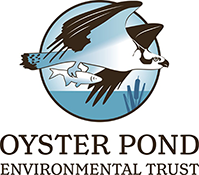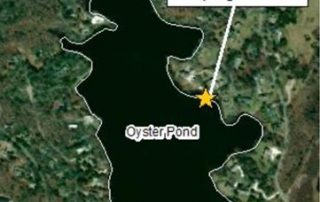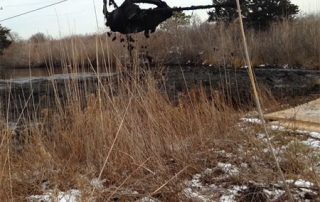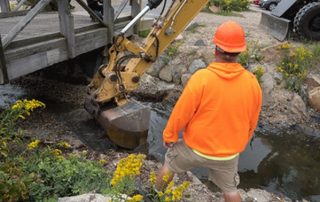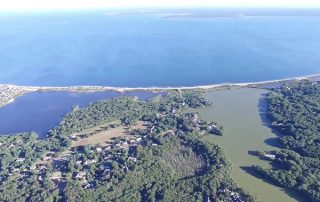Science
Algal Bloom and Cyanobacteria
The pond is currently safe for swimming and boating. We keep a very close eye on the water quality of the pond water because in 2016 there was a potentially toxic algal bloom. The pond in 2016 was literally pea soup green with mats of vegetation forming across the surface. It was so thick that you could see less than two feet down into the water, unlike the usual four and a half feet during a normal summer.
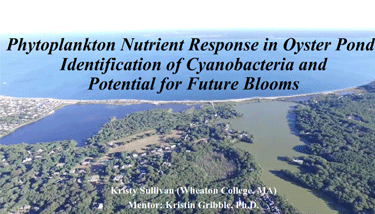
Kristy Sullivan’s Powerpoint presentation
This summer (2020) OPET joined the Association to Preserve Cape Cod (APCC) cyanobacteria monitoring program that tests ponds across the Cape. The APCC tests the pond every two weeks from May to October. We get the results within 24 hours. We took this extra step of testing the pond so we can be certain that the pond is safe.
A study found that the 2016 bloom could have been toxic. Kristy Sullivan, a Wheaton College undergraduate, studied the algal bloom for her project in the Semester in Environmental Science program at the Marine Biological Laboratory. She found five types of freshwater algae growing in the pond samples including the cyanobacteria Microcystis and Aphanocapsa. Both of these can produce microcystin, a toxin that can cause nausea, vomiting, paralysis and acute liver failure in large doses or with long term exposure. We don’t know if the bloom ever reached toxic levels, but we are glad we took the precaution of warning the public to avoid contact with the water in September 2016. Of particular concern is that it appears Microcystis overwinters in the sediment. If we have the same conditions as that summer, we might experience another bloom.
It must be stressed that cyanobacteria are a natural and an important part of a pond’s ecosystem. These bacteria are the base of the food web for ponds. If the testing finds a problem, we will notify you immediately.
In the summer of 2016 there was little to no rain due to a severe drought. The exchange with Vineyard Sound was slow because phragmites plants had gradually grown into the Trunk River. Plus, the Lagoon was full of dead eelgrass. As a result, the water in the pond became less salty and stagnant. The hot sun evaporated the pond water and concentrated the nutrients in the pond. The bloom was made of freshwater algae species and that is why we are constantly monitoring the salinity of the pond. During the bloom the salinity had dropped to 0.9 ppt. We manage the pond to be between 2ppt and 4ppt (In contrast, Vineyard Sound’s salinity is 32 ppt).
There is only one way to increase the pond’s salinity and that is by opening up the passageway from Oyster Pond through the Lagoon to Trunk River and into Vineyard Sound. Any blockage in this complex chain prevents the salt water from flowing in and stagnant pond water from flowing out. OPET has worked with the Town since 2016 to keep this passage way open with dredging Trunk River, removing eel grass from the Lagoon and removing boards at the weir if needed. It is all a balancing act.

